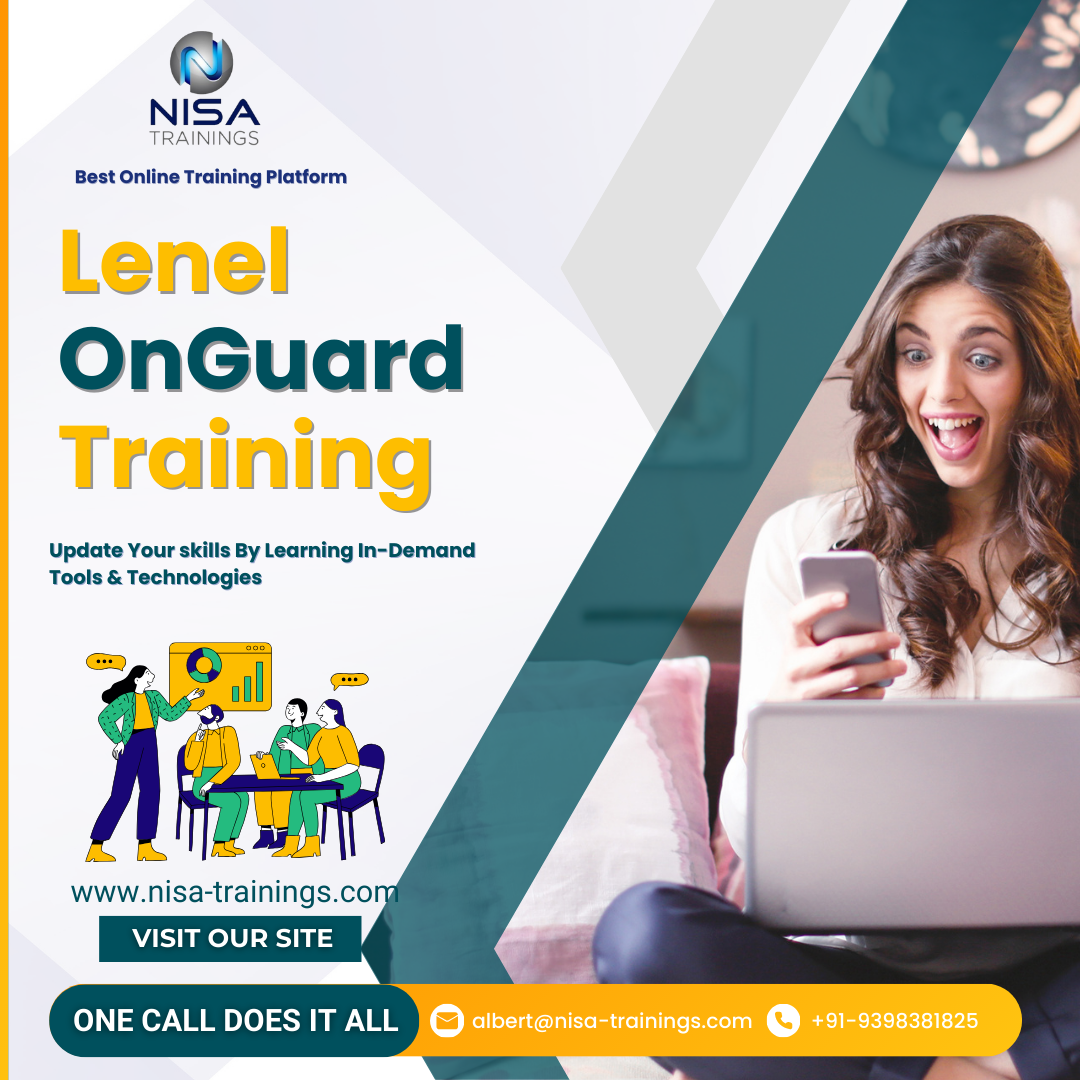Lenel OnGuard Training
Categories
Other Courses
Course level:Intermediate
Lenel OnGuard Training is a structured educational program designed to teach individuals how to effectively use and manage the Lenel OnGuard security management system. The training is aimed at security professionals, system administrators, and installers who want to become proficient in configuring, operating, and troubleshooting OnGuard systems. The training typically covers everything from basic system setup to advanced integrations and troubleshooting.

Why should you choose Nisa For Lenel OnGuard Training?
Nisa Trainings is the best online training platform for conducting one-on-one interactive live sessions with a 1:1 student-teacher ratio. You can gain hands-on experience by working on near-real-time projects under the guidance of our experienced faculty. We support you even after the completion of the course and happy to clarify your doubts anytime. Our teaching style at Nisa Trainings is entirely hands-on. You’ll have access to our desktop screen and will be actively conducting hands-on labs on your desktop.
Job Assistance
If you face any problem while working on Lenel OnGuard Course, then Nisa Trainings is simply a Call/Text/Email away to assist you. We offer Online Job Support for professionals to assist them and to solve their problems in real-time.
The Process we follow for our Online Job Support Service:
- We receive your inquiry for Online Job
- We will arrange a telephone call with our consultant to grasp your complete requirement and the tools you’re
- If our consultant is 100% confident in taking up your requirement and when you are also comfortable with our consultant, we will only agree to provide service. And then you have to make the payment to get the service from
- We will fix the timing for Online Job Support as mutually agreed by you and our consultant.
Course Information
Lenel OnGuard Training
Duration: 25 Hours
Timings: Weekdays (1-2 Hours per day) [OR] Weekends (2-3 Hours per day)
Training Method: Instructor Led Online One-on-One Live Interactive
Sessions.
COURSE CONTENT :
1. Introduction to OnGuard
- Overview of OnGuard: Learn the purpose and benefits of the OnGuard system for security management.
- OnGuard Architecture: Understand the system’s hardware and software components (e.g., servers, workstations, controllers, card readers).
- System Components: Introduction to the core components: access control, video surveillance, intrusion detection, and more.
- Deployment Models: Learn about on-premise and cloud-based deployments.
2. System Installation and Configuration
- Installing the OnGuard Software: Step-by-step guidance on installing OnGuard server and client software.
- Hardware Setup: How to configure and connect hardware devices (controllers, readers, cameras, etc.) to the OnGuard system.
- Initial System Configuration: Setting up the network, communication settings, and connecting the hardware to the software platform.
- User and Role Management: How to define user roles, access rights, and privileges within the system.
3. Access Control Configuration
- Defining Access Levels and Schedules: Creating access groups, defining time zones, and setting up access levels based on user profiles.
- Cardholder Enrollment: Enrolling and managing credentials such as proximity cards, key fobs, and biometric data.
- Access Points and Door Control: Configuring door access points, including lock management, request-to-exit devices, and emergency override features.
- Access Control Event Monitoring: How to monitor real-time access events (e.g., access granted, denied, door forced open).
4. Video Surveillance (VMS) Integration
- Adding and Configuring Video Cameras: Setting up and managing video surveillance cameras, including IP cameras, analog cameras, and NVRs.
- Integrating Video with Access Control: Associating video feeds with access control events (e.g., linking door events with camera footage).
- Configuring Video Analytics: Setting up advanced analytics like motion detection, license plate recognition, or video search based on events.
- Playback and Search: How to review recorded footage, search for specific events, and export video files for reporting or analysis.
5. Alarm Monitoring and Response
- Alarm Configuration: Setting up alarm conditions, thresholds, and event notifications.
- Monitoring Alarms: Configuring monitoring stations to display alarms and provide real-time alerts for operators.
- Responding to Events: How to handle different alarm events (e.g., door held open, fire alarms, video motion detection).
- Alarm Logging and Reporting: Managing alarm logs, reviewing event data, and generating reports for audits or investigations.
6. System Reporting and Data Analysis
- Generating Reports: How to create and customize reports for access control events, system usage, and security incidents.
- Report Types: Explore various types of reports, including cardholder activity, door events, alarm history, and video usage.
- Data Analysis: Using data to improve security operations, identify trends, and optimize system configuration.
7. Advanced Features and Integration
- Third-Party Integration: Integrating OnGuard with third-party systems such as building management systems (BMS), fire alarms, HVAC, and other security technologies.
- Advanced Access Control Configurations: Setting up more complex systems such as multi-factor authentication or biometric systems.
- Mobile and Remote Access: Configuring mobile apps or remote access portals for system monitoring and control.
8. System Maintenance and Troubleshooting
- Routine Maintenance: Understanding the regular maintenance tasks required to ensure system uptime (e.g., software updates, backups).
- Troubleshooting Common Issues: Identifying and resolving common system issues, such as communication problems, hardware failures, and software glitches.
- Diagnostics Tools: Using diagnostic tools to troubleshoot and repair hardware or software problems in the system.
9. Security and Best Practices
- System Security: Configuring user authentication, network security, and encrypted communication for secure operations.
- Backup and Recovery: Setting up automatic backups and data recovery procedures to prevent loss of critical information.
- Compliance: Ensuring the system adheres to local regulations, privacy laws, and industry standards (e.g., GDPR, PCI-DSS).
